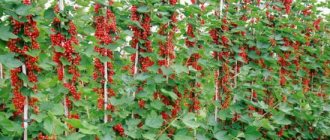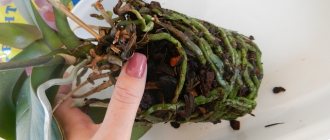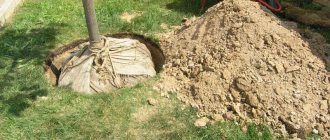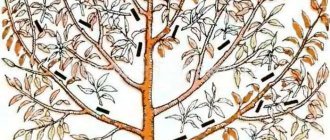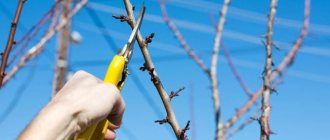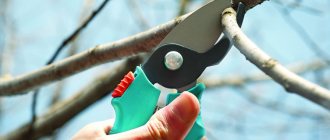Many novice gardeners are somewhat apprehensive about such a gardening activity as pruning roses in the spring for beginners. People who have not understood the essence and technology of pruning are afraid of the apparent complexity and heavy physical activity. In fact, there is nothing complicated, much less difficult, about pruning roses.
Why is pruning roses necessary? Because with regular pruning, the garden or flower garden looks more well-groomed and the more the gardener takes care of the garden, the easier it is to do it again and again. But the most pleasant consequence of proper pruning is the splendor of flowering. Roses produce larger flowers, the number of flowers increases, and the flowering period extends.
Pruning roses in spring - step-by-step instructions for beginners
Do not be afraid of the process of pruning roses, since this manipulation is necessary. The buds are located along the entire length of the shoot, so you can safely trim off unnecessary branches.
It is necessary to adhere to the basic rules of pruning:
- the cut line should be 0.5-0.7 cm above the kidney, and an inclination angle of 45 degrees must be maintained;
- cut color - white or greenish;
- pruning is performed on the outer bud, since the new branch will grow outside;
- All intertwining, rubbing, growing inside the crown branches are cut off. After which it is necessary to ventilate well and provide sufficient lighting. This reduces the risk of infection with fungal diseases;
- black shoots should be removed. They are identified very simply: spots of dark brown or black color that can be found throughout the branch. Areas with “gangrenous spots” are cut out or the entire branch is removed;
- dry and sunny weather is the most optimal time to carry out work;
- it is necessary to cover sections larger than 1 cm in diameter with garden varnish.
It is important to protect yourself by wearing clothes that have long sleeves, gloves made of thick fabric, mittens, and a hat.
Required Tools
To prune rose bushes, you will need a standard set of garden tools: pruning shears, loppers or a garden hacksaw. It is important that they are well sharpened and not dirty.
Before work, all devices must be disinfected by performing a number of steps:
- Dip all available tools into a light solution of potassium permanganate while working;
- 70% alcohol must be poured into a can that has a spray bottle, and the blades must be irrigated throughout the entire operation;
- treat instruments made of stainless metal with a 3% solution of copper sulfate.
When to prune roses in spring
Before the procedure, it is important to make sure that there are no night frosts outside, as sudden frosts can have a bad effect on the plant. All manipulations should be carried out before the sap flow begins. If you neglect this rule, then there is a possibility that the roses will bloom sluggishly.
The timing of pruning depends on the warming in a particular area. It is necessary to take into account weather conditions and choose the appropriate time for the procedure.
The most ideal moment is established warm spring weather, after the buds have swelled, while the growth of new branches has not yet begun. This period begins in March-April.
You need to choose a warm and sunny day and get to work.
It is necessary to take into account the region and the climatic conditions within it. In the middle zone, in the south with a temperate climate, it is necessary to carry out manipulation in March or early April.
If we take the northern regions - the Urals, Siberia, then the most successful procedure will be at the end of May.
In such regions, the warming of the soil occurs quite slowly, and a cold snap can occur at any moment.
Pruning climbing roses in spring for beginners
The main purpose of pruning a bush is to create a lush and neat bush. Before the manipulation itself, they look through the bush and identify the thickening.
Overgrown branches must be pruned. If the density of the branches is sufficient, then the whole process is postponed. After all the work, it is possible to preserve an elegant and beautiful bush.
If you neglect the procedure, then in some cases the plant will not be fully ventilated, and thus will become more susceptible to various ailments.
This will most likely affect flowering: it will become sluggish and flowering will occur later than usual.
Proper pruning of the bush will enable the gardener to care for the climbing branches, give a neat appearance, and ensure full growth of the plant.
First of all, it is necessary to get rid of the protective cover, trim the branches of the plant, observing sanitary conditions, and thin out the branches that protect the bush. It is important to form the bush so that the shoots grow in a vertical position.
Pruning climbing roses
1. The covering material is first removed. This is done only after warm weather sets in. Next, work should be done on pruning the climbing bushes, aimed at getting rid of shoots that have died.
2. Next, you can form the bush itself. To do this, trim the main branches to 1 healthy bud, and cut off excessively long branches. Thus creating a nice shrub shape. The side parts are also cut off, leaving only two or three buds on the lower part.
3. The internal branches are trimmed, thereby creating an original and beautiful shape.
All pruning activities are recommended to be carried out from the 2nd year of flowering.
Is it necessary to remove faded buds from roses?
In summer, during the flowering process of the bush, it is important to promptly remove faded inflorescences.
Pruning should be done before the plant begins to form seed pods. Since after the flowers die, the bush redirects all its forces to the formation of seeds, to the detriment of further flowering.
To prevent the plant from leaving weakened for the winter, all inflorescences are removed in the fall, and the bush is fed with phosphorus-potassium fertilizers.
Pruning roses in spring is an important procedure. Since the health of the bush and the duration of flowering depend on this. By following all the rules, even a novice gardener who has never been involved in floriculture can grow a beautiful rose bush.
How to prune bush roses
There is no need for excessive pruning for this type of rose. This is done to create a more neat and graceful shape of the bush.
Beginning gardeners strive to create a dome-shaped shrub. With this form, less moisture enters and the risk of rotting of the bush is reduced.
All work must be performed according to the following scheme:
1. The cover is removed. Dead and dry branches are cut off.
2. To get a neat and pretty bush, all branches are cut off 1 healthy bud at a time.
3. By cutting the stem, touching 1 upper bud, you will be able to create an abundant and lush crown. Thanks to this manipulation, all subsequent buds are awakened and a voluminous and well-groomed shrub is obtained.
4. All branches directed towards the center are shortened, thereby preventing the shoots from intertwining. This method will give the bush a neat appearance.
5. Branches that get in the way should be removed. Only the one that is the youngest with a light bark, which has a central location, is left.
An adult bush should eventually have 4-5 branches, on which there are 3-4 swollen buds.
The need for spring pruning (video)
In order for roses to bloom lushly and delight throughout the season, you need to carry out timely and competent pruning. What does it give?
First of all, we leave the strongest shoots, which later form strong shoots. Thanks to this, the vitality of the plant increases, the plant itself develops more actively, blooms more abundantly and lives longer. And the gardener uses pruning to give it the desired shape.
The pruning procedure is quite simple, but different groups of varieties require their own approach.
How to prune hybrid tea roses correctly
This category of flowers must be processed in the spring. When performing the procedure, approximately 5 shoots from last year are left. Only on powerful branches do healthy shoots appear.
More buds grow on such stems than on weaker ones.
Before taming young bushes and planting them in open ground, they are pruned at 15, and it is also necessary to leave 2-3 buds. More mature bushes are cut to 20-25 cm, leaving 5-6 buds on the shoots.
Shoots that are more than 2 years old should be removed and the rose should be left to bloom on younger branches.
Shortening young shoots allows the bush to give a lush and beautiful shape.
Rose pruning scheme: creating the perfect plant
In total, there are three conventional types of spring pruning of roses, each of which has a specific purpose and is used depending on the age of the plant:
- Strong. It is carried out when planting young seedlings, to rejuvenate adult roses, as well as for hybrid tea and polyanthus varieties. In this case, only 2-4 buds are left at the base of the branch;
- Average. It is used in the second year of growth and stimulates rapid growth of leaf mass, growth and development of young shoots. For adult specimens it ensures early flowering. With medium pruning, part of the branch is removed up to 6-7 buds;
- Weak. A small part of the shoot above the last bud is removed, which gives the bush splendor and increases the number of buds during flowering. Most often used for climbing types of roses, as well as vigorously growing bushes.
As for pruning climbing roses, there are also some nuances here. Often, such plants cause confusion among gardeners who do not know how to prune them correctly.
It’s easy to start such a bush - just neglect it in the spring, and the thin branches will already intertwine with each other, begin to choke out other plants and crawl onto the fence. To ensure that the climbing rose remains beautiful and neat, pruning is carried out according to the following scheme:
- Large shoots are pruned to the top bud;
- You need to leave 2-3 buds on the side branches;
- During summer flowering, shoots with sluggish and dried buds are removed until the first healthy leaf.
For other varieties of roses, the following pruning rules apply:
- Hybrid tea specimens produce buds on the current year's shoots, so it is recommended to trim an adult bush to a height of 20 cm, leaving 4-6 buds. Young plants should be 15 cm from the ground, branches are removed after 2-4 buds;
- Floribunda roses require combined pruning, when some of the shoots are shortened greatly, and the rest - moderately. This approach helps prolong flowering and stimulate the growth of branches from the root;
- Shrub varieties do not need frequent pruning - work is carried out only to form a beautiful crown. The main shoots of tall-growing specimens are shortened by 1/3, and of bushes up to 1.2 m - by half;
- Formative pruning is not carried out for ground cover roses; in the spring they are only partially thinned out, removing vertically growing shoots. Heavy pruning is carried out once every 5-6 years to maintain abundant flowering.
It is imperative to treat the cut areas with garden varnish so that the rose shoots heal faster and do not rot.
Proper pruning will help increase the number of buds this season, so be sure to familiarize yourself with the theory before starting gardening work.
Watch the video on how to prune a rose in spring.
Do I need to prune ground cover roses?
For this species, there is no need to carry out this manipulation to form a bush. Pruning is carried out for the purpose of thinning and as a sanitary treatment, which is carried out in the spring.
Branches growing in a vertical position are removed. Only those parts with green bark are preserved.
Full pruning should be done once a year. All side parts are cut off, leaving only 2-3 buds. This method will give the bush a neat appearance and will delight you with its flowering for a long time.
How to prune border roses in spring
Small rose bushes, 60 cm in length, appeal to many designers. With their help, you can create many compositions, work on the design of your garden, make it unique and beautiful.
This type of shrub needs to be pruned. For mature bushes, it is important to remove the side branches and leave only those that grow vertically.
Border roses need to be pinched once a year, mainly in the third decade of spring and summer. The procedure is carried out on the 4th and 5th leaves. In further care, it is important to regularly get rid of dry shoots.
All manipulations performed will have a positive effect on the growth of rose bushes, making them lush and beautiful. The growth of the plant, its flowering and appearance will depend on the correctness of the work.
Activities after pruning
Spring pruning of roses is necessary to improve the appearance of the plant and abundant flowering. Updated bushes have larger leaves and flowers. The bush looks healthy and well-groomed.
But the procedure brings stress to the plant, so the following measures are taken:
- Mandatory and regular watering, loosening the soil.
- A week after pruning, treatment for pests and diseases is carried out. Plants are weakened and can easily get sick.
- For good growth, mulch the soil with humus and peat. This will provide oxygen and nutrients to the roots.
- Fertilizing with mineral fertilizers.
After the events have been completed, all that remains is to wait for the beauty of the garden to bloom. These are sophisticated and beautiful flowers that can cause involuntary delight even among inexperienced gardeners. Caring for plants will give you joy and new strength for further achievements. Thanks to perseverance and hard work, in the summer there will be a dream garden with fragrant roses.
Pruning indoor roses
This flower is a decoration for any interior. Another name for indoor rose Cordana. It is important to follow all the rules for caring for the shrub and then it will delight you with its flowering for a long time.
Pruning must be done in autumn. If this event was not completed for any reason, it will be postponed until the spring.
March or April is the optimal time to carry out this manipulation. At this time, the buds are swollen and do not have time to bloom. By shortening last year's shoots, 3-4 buds are left that have already developed.
Houseplants can have any shape; it is important to remove dead and dry branches. Do not forget to cut off the branches growing towards the inside of the bush.
If the plant does not bloom, careful pruning should be done.
Event goals
First, determine which shoots produce the largest number of flowers - last year's or fresh ones. And now you need to identify for yourself the purpose with which you start pruning. There are three options here:
— You want to extend the life of the plant;
— You want your roses to bloom earlier;
— You need to create a certain shape of the bush.
Now let's look at what we have in each specific case:
- By ridding the plant of old branches and selecting strong ones, we provoke the growth of new shoots and thus increase the life span of the bush.
- Pruning after the end of the growing season will help achieve earlier flowering. This is especially useful if last season the bushes grew a lot in unnecessary directions. With proper pruning, you will remove exactly those branches that violate the shape.
- Attempts to change the growth form of bushes with the right approach lead to the following results:
— You can get individual large flowers on thin stalks to bloom from the bush;
— A large number of flowers and a large number of shoots will appear on the bushes, the rosettes will decrease in size, but their number will greatly increase.
Rose bush after pruning
